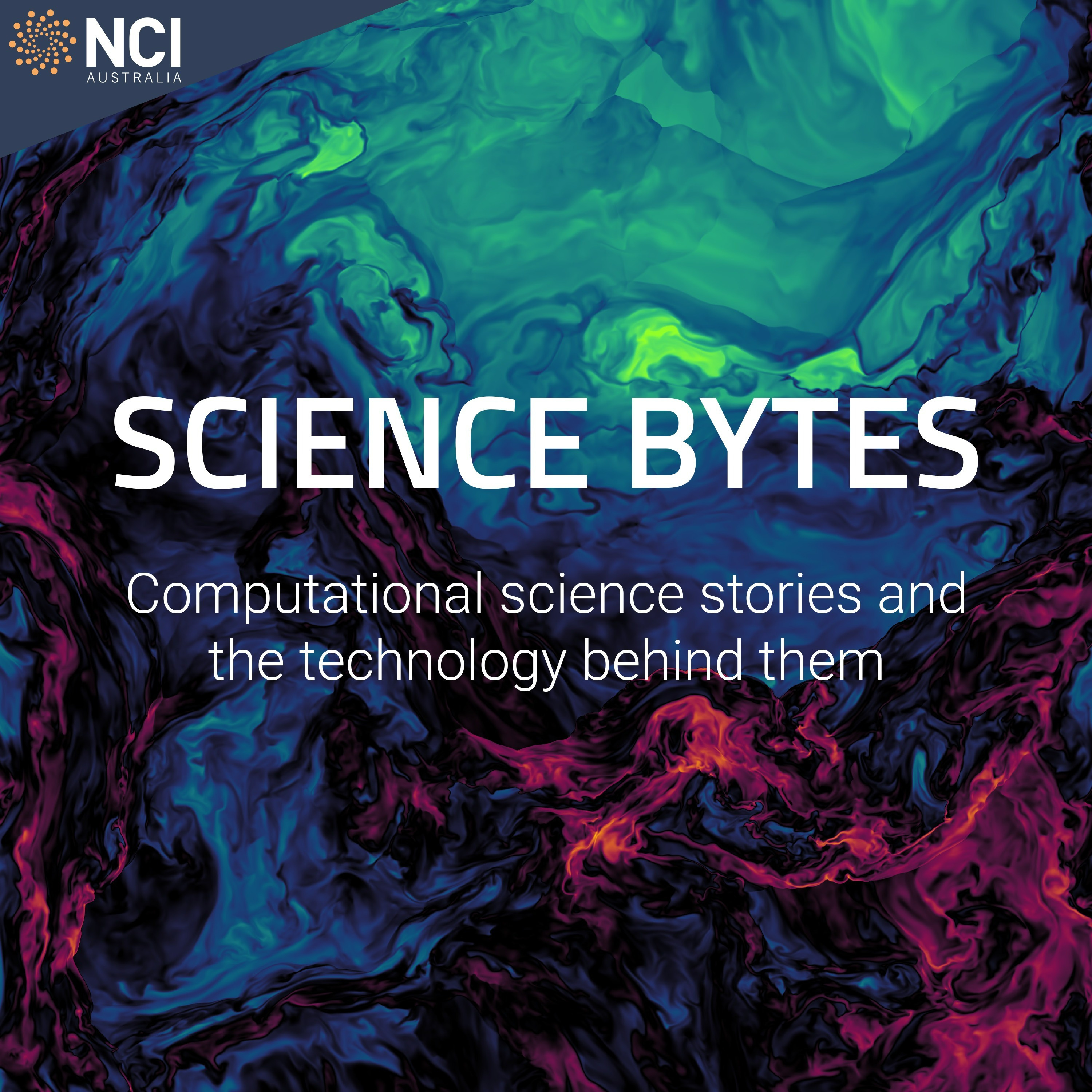- 6. Authentic Data Science education for real impact with Dr. Linda McIver
Join us in this conversation with Dr. Linda McIver, founder of the Australian Data Science Education Institute, and passionate educator, researcher and advocate for STEM equity and inclusion. Linda’s mission is to ensure that all Australian students have the opportunity to learn Data Science skills that empower them to solve real problems in the world.
Find out more:
Dr. Linda McIver
Website: https://adsei.org/director/
Twitter: https://twitter.com/lindamciver
Australian Data Science Education Institute (ADSEI): https://adsei.org/
Learn more about the National Computational Infrastructure (NCI):
Website: https://nci.org.au/
Twitter: https://twitter.com/NCInews
LinkedIn: https://www.linkedin.com/company/national-computational-infrastructure/
Thanks to James Beattie (ANU) for the astrophysics visualisation used in the artwork, and to Andy Maher for the show production (andymaher.com).
S1E6 - 25m - Dec 19, 2022 - 5. Computational chemistry for sustainability with Dr. Martina Lessio
Martina Lessio, Scientia Lecturer in the School of Chemistry at UNSW Sydney, and her team are researching the best uses for minerals for purifying water, how we can use carbon dioxide and plastic waste for energy storage, and how we can preserve valuable marble artworks from water damage. How does she do so many things at once? Join this conversation with Martina to find out how high-performance computing makes all this possible.
Find out more:
Dr. Martina Lessio
Website: https://www.unsw.edu.au/staff/martina-lessio
Twitter: https://twitter.com/martina_lessio
Learn more about the National Computational Infrastructure (NCI):
Website: https://nci.org.au/
Twitter: https://twitter.com/NCInews
LinkedIn: https://www.linkedin.com/company/national-computational-infrastructure/
Thanks to James Beattie (ANU) for the astrophysics visualisation used in the artwork, and to Andy Maher for the show production (andymaher.com).
S1E5 - 14m - Dec 12, 2022 - 4. Aviation meteorology for safer flights with Christal Xie
Have you ever experienced turbulence during a flight? Aviation meteorology is what makes it possible for us to fly safely. Join us in this conversation with Christal Xie, an Aviation Meteorology Specialist from The University of Melbourne and the Australian Research Council Centre of Excellence for Climate Extremes, to discover how supercomputing helps her understand potentially dangerous turbulence behaviour.
Find out more:
Christal Xie
Website: https://climateextremes.org.au/profile/yuranxstudent-unimelb-edu-au/
Twitter: https://twitter.com/XChristaltse
ARC Centre of Excellence for Climate Extremes: https://climateextremes.org.au/
Learn more about the National Computational Infrastructure (NCI):
Website: https://nci.org.au/
Twitter: https://twitter.com/NCInews
LinkedIn: https://www.linkedin.com/company/national-computational-infrastructure/
Thanks to James Beattie (ANU) for the astrophysics visualisation used in the artwork, and to Andy Maher for the show production (andymaher.com).
S1E4 - 13m - Dec 4, 2022 - 3. Studying millions of objects in the universe with Dr. Brad Tucker
Are we close to answering the biggest questions of the universe? Join Dr. Brad Tucker, Astronomer from the Mount Stromlo Observatory at The Australian National University, in this new episode of Science Bytes to learn about how supercomputing and big data are accelerating the processes of astronomy. In his daily work, Brad studies dark matter and supernovas, putting humanity closer to solving research questions that we previously thought would be impossible to answer.
Find out more:
Dr. Brad Tucker
Website: https://www.mso.anu.edu.au/~brad/
Twitter: https://twitter.com/btucker22
SkyMapper Project: https://skymapper.anu.edu.au/
Rubin Observatory: https://www.lsst.org/
Learn more about National Computational Infrastructure (NCI):
Website: https://nci.org.au/
Twitter: https://twitter.com/NCInews
LinkedIn: https://www.linkedin.com/company/national-computational-infrastructure/
Thanks to James Beattie (ANU) for the astrophysics visualisation used in the artwork, and to Andy Maher for the show production (andymaher.com).
S1E3 - 24m - Dec 1, 2022 - 2. Analysing human genomes with Dr. Hasindu Gamaarachchi
Did you know that a human genome contains three billion bases and extracting a single sample will get you one terabyte of data? Join us in conversation with Dr. Hasindu Gamaarachchi, a Genomics Computing Research Scientist from the Garvan Institute of Medical Research, to learn how it is possible to analyse this massive amount of data with the help of high-performance computing.
Find out more:
Dr. Hasindu Gamaarachchi
Website: https://www.garvan.org.au/about-us/people/hasgam
Twitter: https://twitter.com/hasindu2008
Oxford Nanopore Technology’s (ONT): https://nanoporetech.com/
Learn more about NCI:
Website: https://nci.org.au/
Twitter: https://twitter.com/NCInews
LinkedIn: https://www.linkedin.com/company/national-computational-infrastructure/
Thanks to James Beattie (ANU) for the astrophysics visualisation used in the artwork, and to Andy Maher for the show production (andymaher.com).
S1E2 - 16m - Nov 29, 2022 - 1. Atmospheric chemistry in Australia with Associate Professor Jenny Fisher
Join us in this new episode of Science Bytes with Associate Professor Jenny Fisher, researcher from The Centre for Atmospheric Chemistry at University of Wollongong, to learn about her use of high-performance computing to understand chemical processes in the atmosphere. Her computer models help us learn about the pollution in the atmosphere at high resolution.
Find out more:
Jenny Fisher
Website: https://scholars.uow.edu.au/display/jenny_fisher
Twitter: https://twitter.com/atmosjennyf
Tracking pollutants: https://www.youtube.com/watch?v=1FqIKbCaLYk
Tracking chemical processes in the atmosphere: https://nci.org.au/research/research-highlights/tracking-chemical-processes-atmosphere
Learn more about the National Computational Infrastructure (NCI):
Website: https://nci.org.au/
Twitter: https://twitter.com/NCInews
LinkedIn: https://www.linkedin.com/company/national-computational-infrastructure/
Thanks to James Beattie (ANU) for the astrophysics visualisation used in the artwork, and to Andy Maher for the show production (andymaher.com).
S1E1 - 24m - Nov 29, 2022
